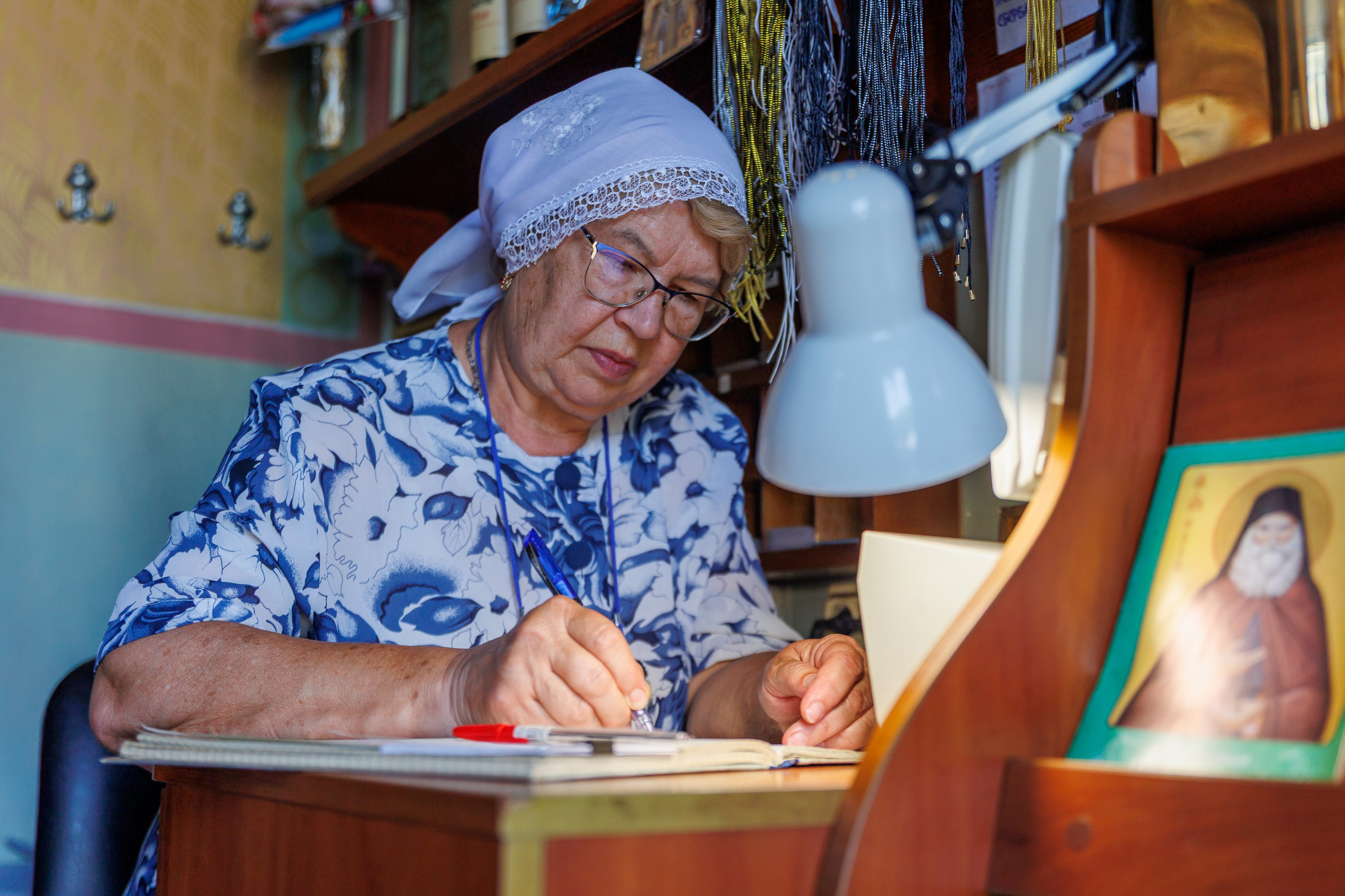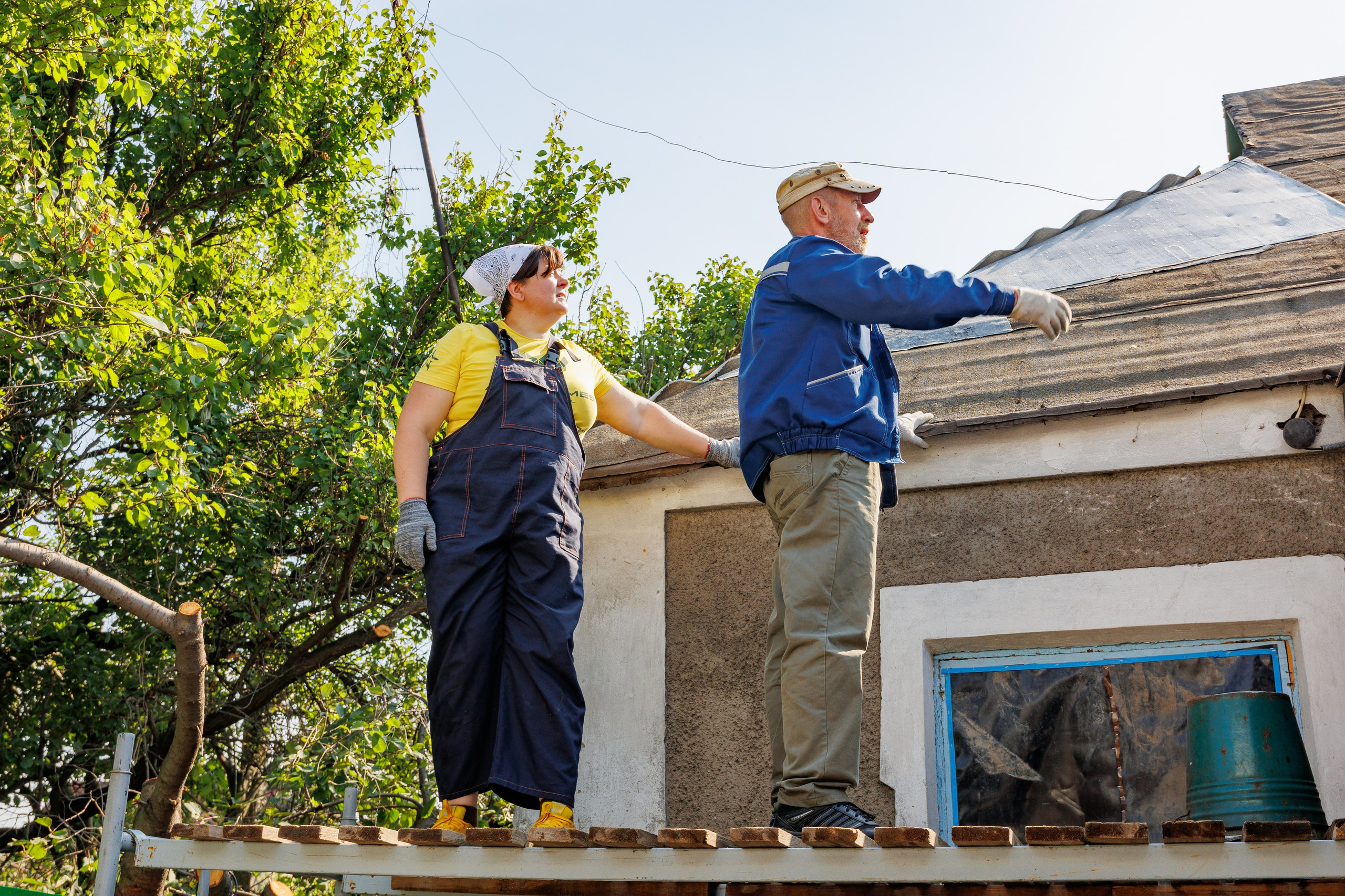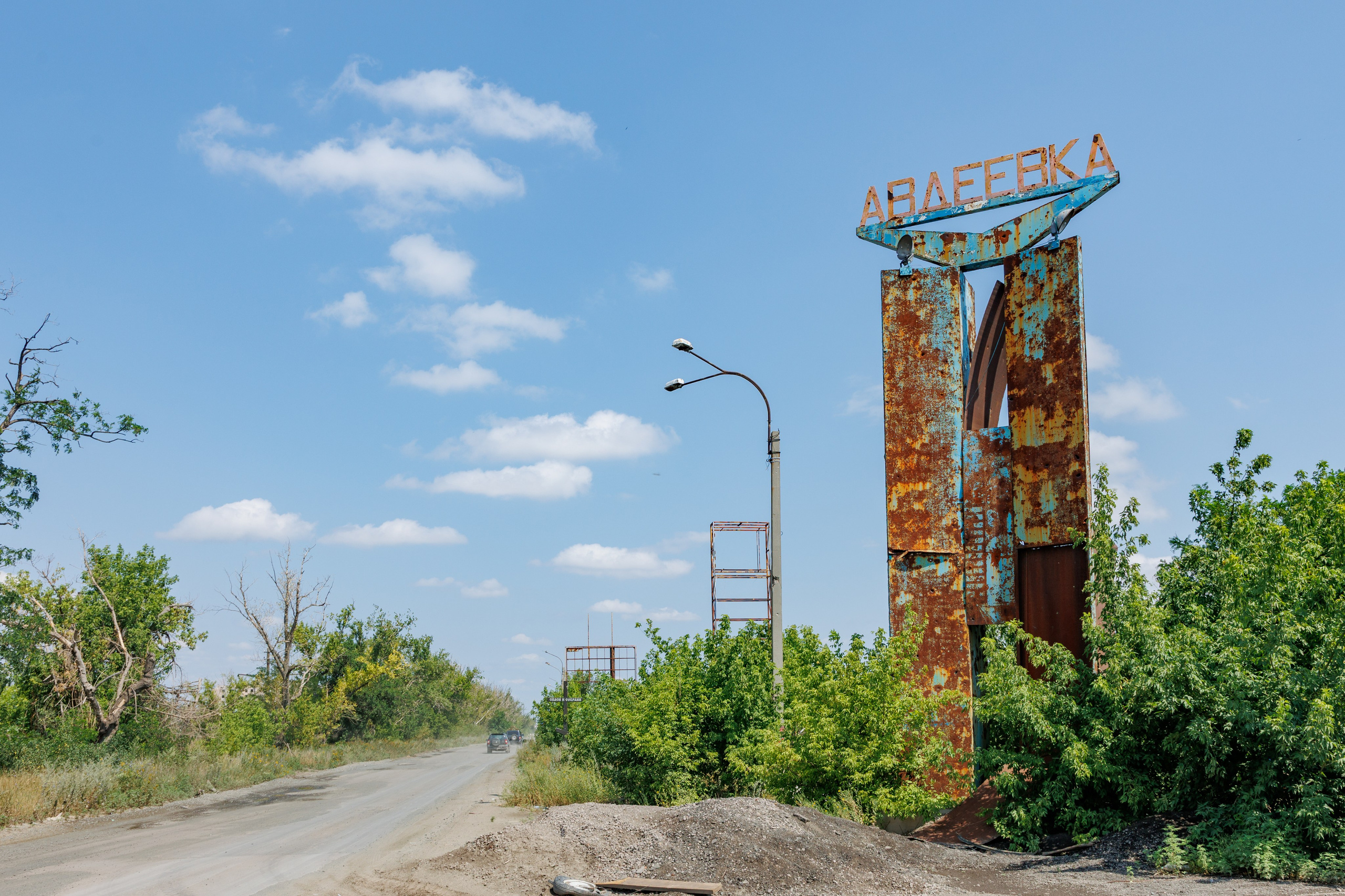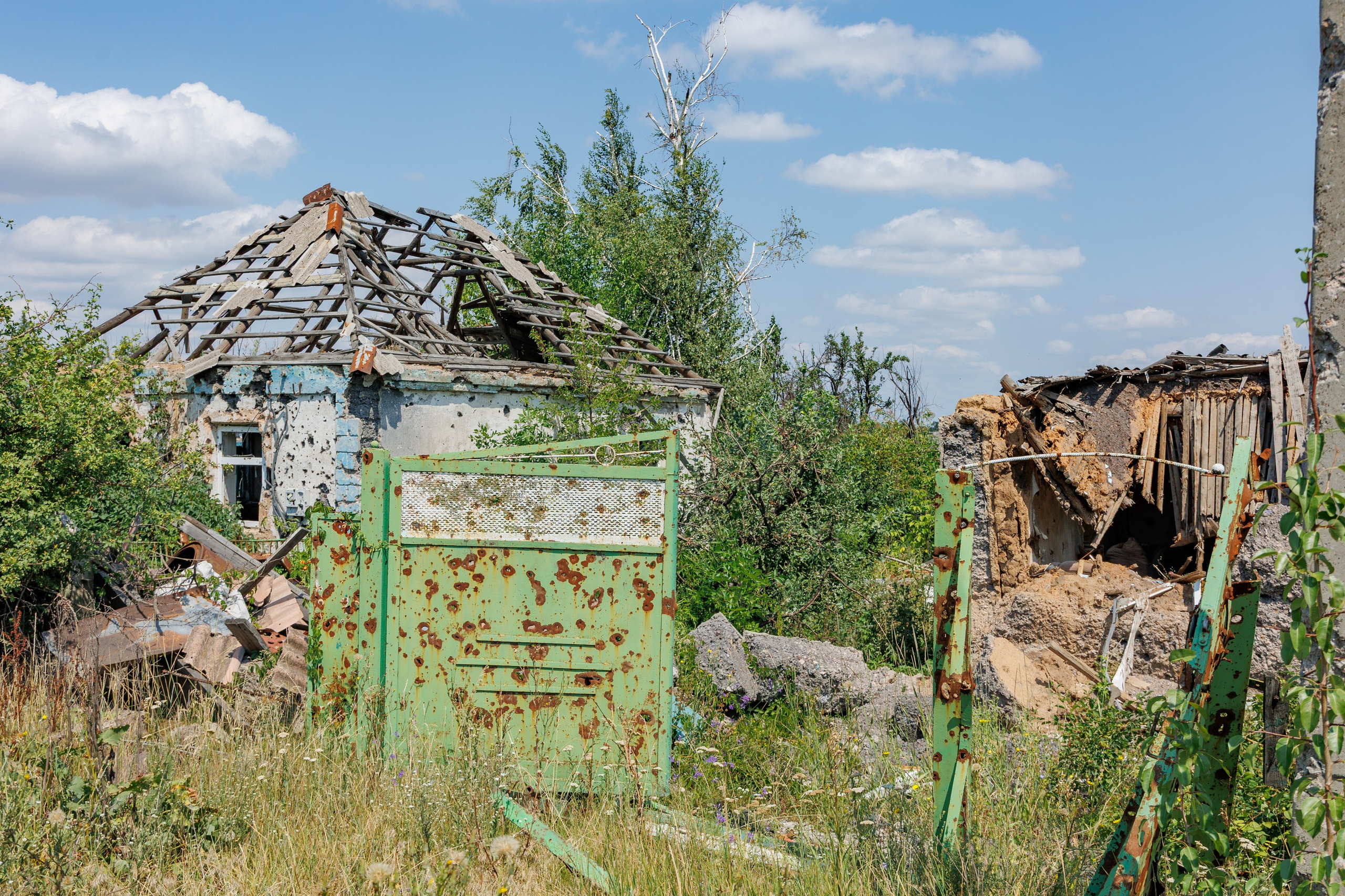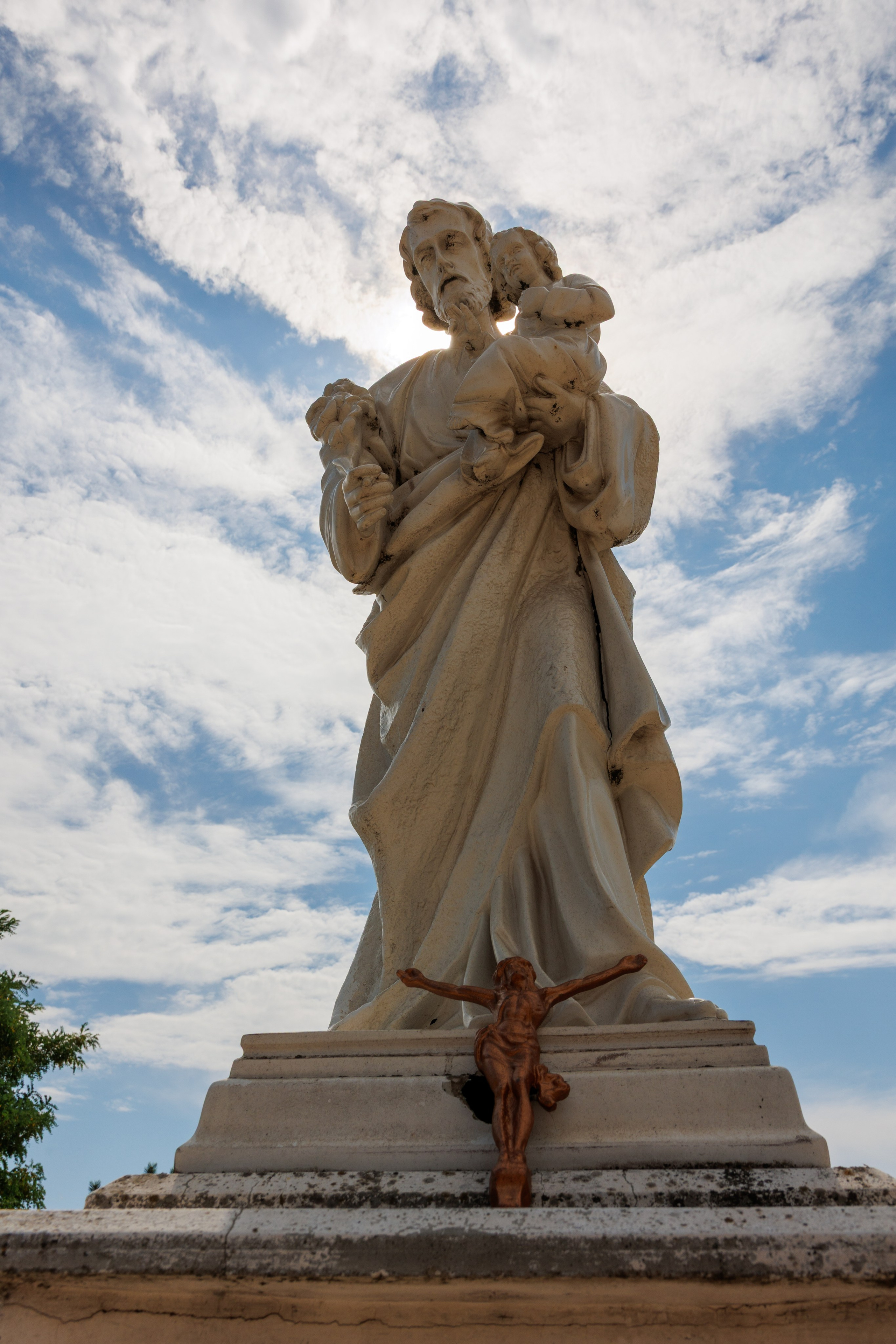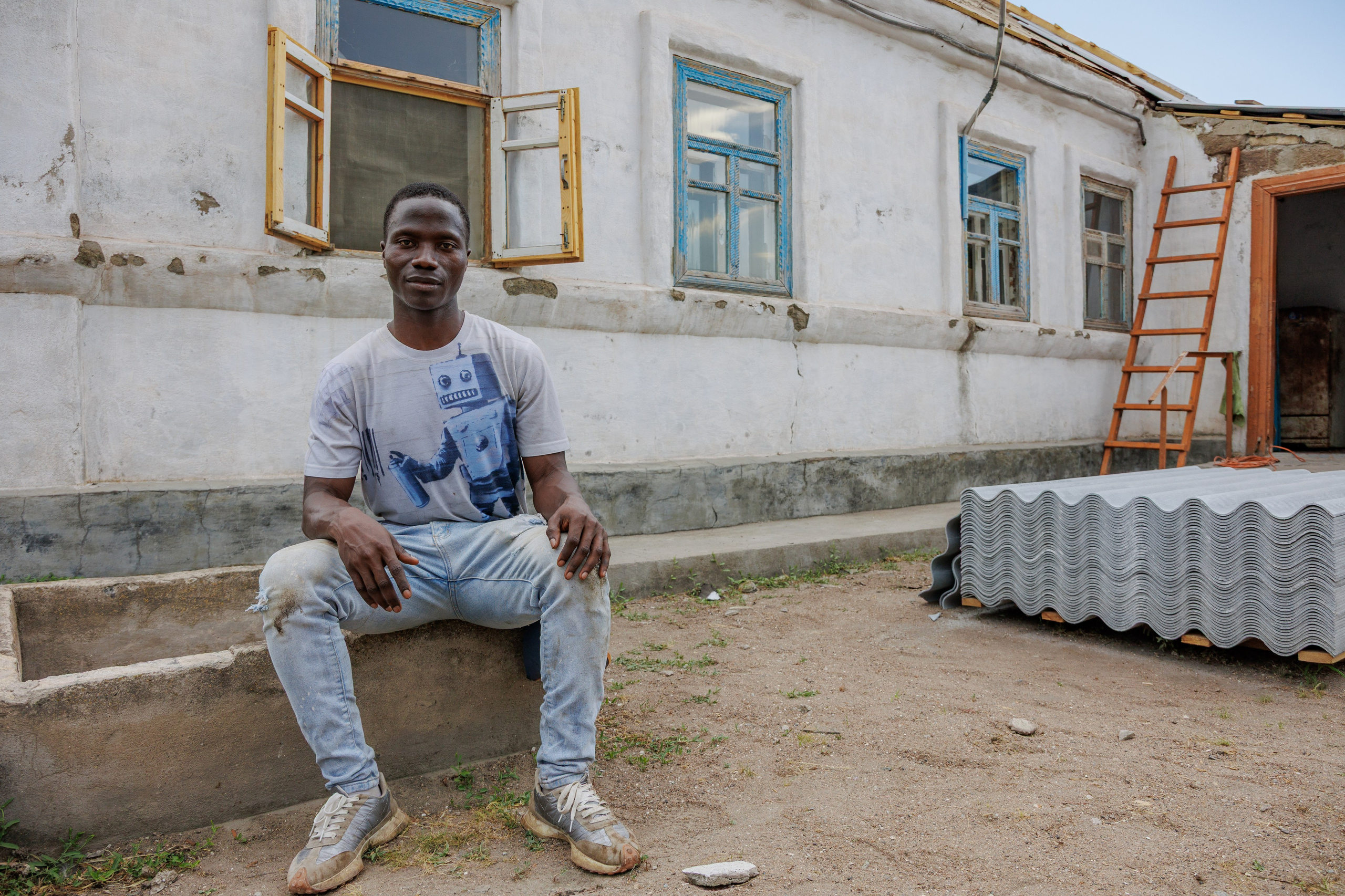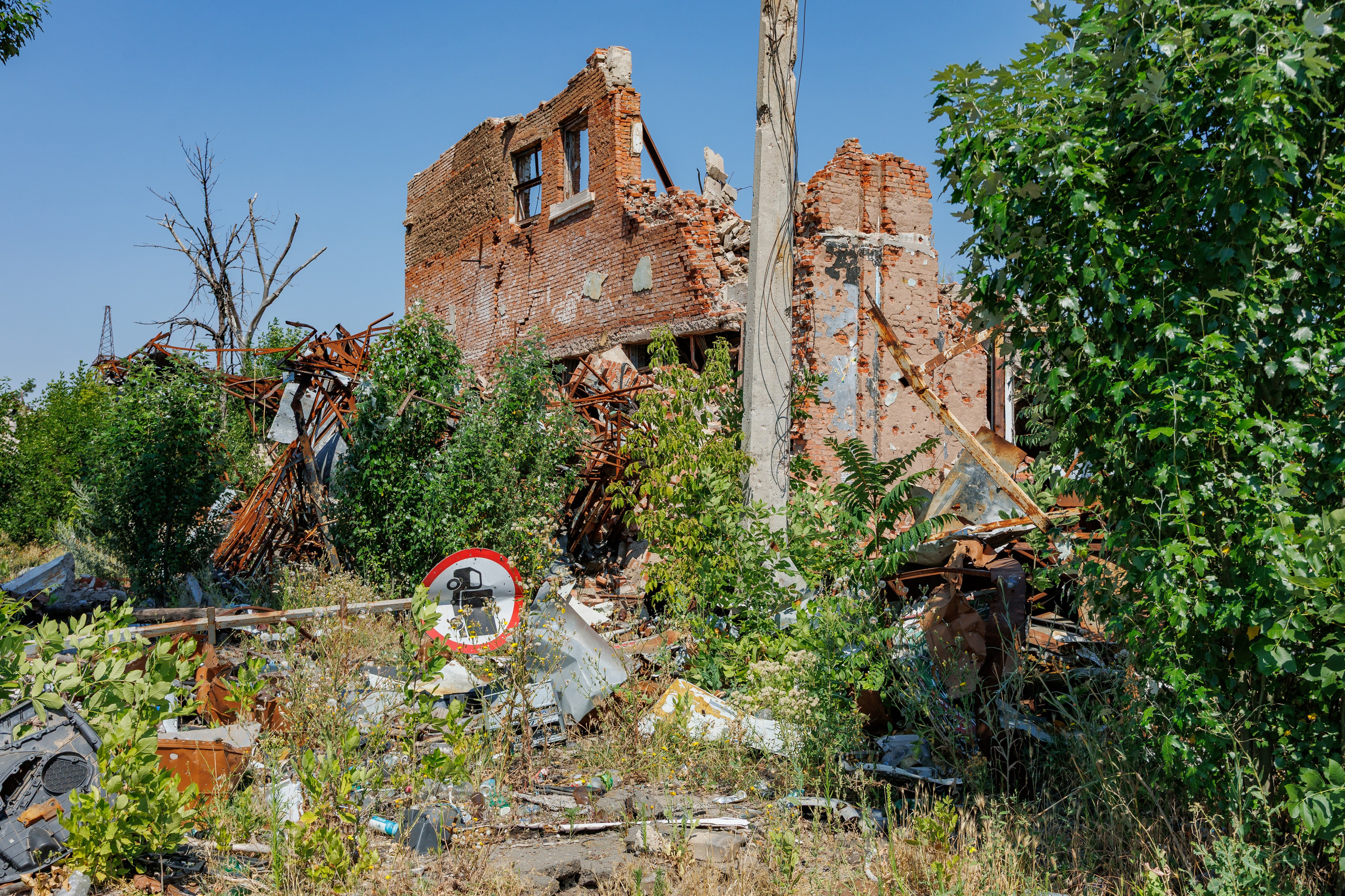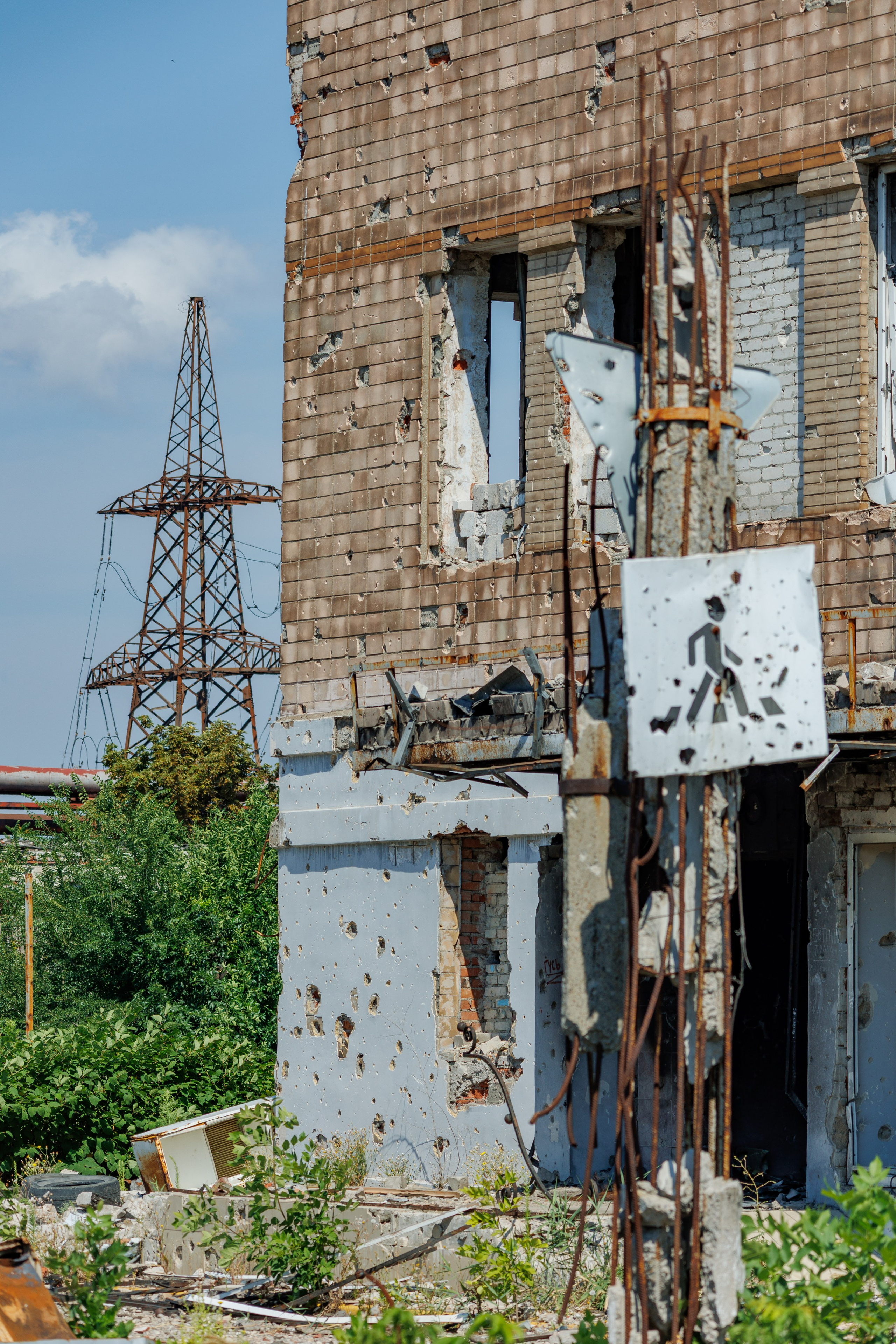A year ago (2024) I was in Mariupol and made a photo report here. This time (2025) the geography of cities has expanded and I am sharing with you what I saw, heard and photographed. Somewhere near Avdiivka (a frontline city located in the ZBD (combat zone)), having gotten a little lost, I almost went the wrong way and now I might not have to write this article for you. But first things first.
I covered the activities of volunteers of the Russian Orthodox Church Synodal Department, who come to the conflict zone and help people in various areas. This includes the restoration and repair of housing, assistance in humanitarian centers, work in hospitals, and much more. People from different parts of Russia and other countries come here. Among them are students and pensioners, men and women, bosses and managers from different fields of activity — ordinary people who help other people for free. This is what humanity is based on.
In Yasinovataya (not far from Donetsk), where I was based for the first few days, I attended a Sunday service at the church in honor of the holy chief apostles Peter and Paul.
The service is attended mainly by women. The temple itself is in excellent condition — everything is very beautiful and well-groomed. But as soon as you leave the cool interior of the temple and go outside, a tank, an armored personnel carrier, and other equipment drives past. You immediately return to reality.
Today, Yasinovataya is a frontline town where life goes on. Despite the fact that there are daily arrivals, and planes, helicopters, and missiles fly over the city, local residents go about their business and to work, the market is bustling with trade, and children’s institutions are preparing for the new school year, I felt…strange. Curfew, no water and power outages, mobile communications and the Internet work occasionally, constant air defense work against drones, distinct sounds of gunfire and explosions, military equipment on the roads, and every second you can't let the location of the nearest bomb shelter out of your head. Even in your sleep.
Volunteers help local residents restore their homes. And there is such wonderful nature around. Avdiivka.
From here to the active front 20-30 kilometers, however, local battles are also taking place in the outskirts of the city and forest belt.
There was a fight for every house. For every meter of land. The city cannot be restored, at least in the near future. Everything is mined, even cemeteries and bus stops.
The number of locals who have permanently remained in their homes here can be counted on the fingers of one hand. Perhaps, one day, a peaceful life will return to these homes.
Volunteers help restore shelter to a local resident. A huge human effort. I move on.
Donetsk. The first stop is at the humanitarian aid center, where volunteers of the Russian Orthodox Church Synodal Department help workers and local residents. All those in need receive worthy assistance.
Volunteers also work in the Gusak and Kalinin hospitals in Donetsk. They provide assistance to those injured in the fighting and to local residents.
The atmosphere here is very difficult, at first glance, when you see completely burnt young people and sick old people, but then you catch the smiles of workers in the corridors of the hospitals and your soul becomes warmer.
I spent several days after my visit trying to get the “dead” smell and the smell of burnt skin out of my nose. It still haunts me like phantoms.
Everything will be fine. I’m moving on.
Donetsk.
Daily arrivals — drones and missiles. Because of this, the city is maintained in a normal state, but there is neither the strength nor the ability to do more. Water every other day and by the hour, utilities are insufficient, but it cannot be said that nothing is being done. Quite the opposite. Here is a DonMac (analogous to McDonald’s) opened, here is an expensive coffee shop where a well-groomed girl bought herself a smoothie and gets into a new BMW, and here are laughing children jumping from a bridge into a river. Of course, the newest electric buses don’t drive along the roads here, and people don’t party until the morning in nightclubs to modern DJs, and FC Shakhtar hasn’t played at the local stadium for a long time, but life goes on as usual. “You get used to everything” ©
Moving on, now to the south.
Volnovakha.
Two years ago (2022-2023), according to various sources, from 80 to 95 percent of the city’s entire housing stock was destroyed as a result of military action. In simple terms, the city ceased to exist and was completely demolished. At that time, there were no more than 1,000 local residents left in the city. Out of 20,000 people.
Today, in 2025, the city exists again. Branches of Russian banks have opened, new houses have been built and old ones renovated, people are starting their lives anew. Electric trains already run here (or, more correctly, to here) from Mariupol several times a day. An extension to Donetsk is planned, but without stabilizing the front, this is not yet possible.
Volunteers from the Synodal Department of the Russian Orthodox Church are also helping in this area.
Fragments of various bombs, missiles and mines can still be easily collected from the ground.
And I head further to the very south of the DPR, to Mariupol. There the contrasts of life “play” with incredible colors.
Mariupol. There won’t be any beautiful shots of brand new residential complexes and expensive restaurants, although they are here.
The first stop in the city is a visit to several local residents, who are given all the necessary help by volunteers. They cook food, wash, go for medicine. And in response, they show black and white photos of their lives and tell interesting stories. And so the day goes by.
Smiles are what people give to each other here. More valuable than any gift.
I’ll take a little walk around the city.
In general, the changes in Mariupol over the year, especially against the backdrop of Donetsk, are visible even to the naked eye. Fountains are working in the park, streets and alleys are well-groomed, housing stock (including the private sector) is being restored. Beautiful and expensive cafes and restaurants have appeared. People hang out on the beach, eat corn and shrimp, washing it down with beer. And taxi prices, by the way, are quite Moscow prices. And if, again, you don’t look at everything around and into the distance, then everything looks decent and decent. But the “Echo of War” hasn’t gone anywhere yet.
This is still the case, of course, everywhere in the city.
By the way, volunteer Felix is working here. A student at MGIMO, he came from Benin several years ago and now, during the summer holidays, he is restoring the roof for local residents in Mariupol.
When I was studying at school in my country, I admired the exploits of the USSR in World War II during history lessons and firmly decided for myself that I wanted to live in Russia. I am learning the language, culture, traveling around the country and intend to start a family with a Russian girl!
Meanwhile, both staff and volunteers continue to work at the aid center. People come in and receive humanitarian aid — clothing, food, medicine, small appliances. Everything that is transferred from different parts of the country (and from abroad, too) certainly finds its consumer. Thank you all for this!
And I would like to finish this lengthy post from the left bank of Mariupol.
Of course, we are talking about Azovstal. The incredibly huge territory of the plant looks terrifying today. Some say that they will make a park there, some think that production will be restored. Personally, I think neither one nor the other. The plant and every workshop were completely destroyed, and mined wagons stand in several kilometer-long lines to this day.
I will be honest, as I write this text (several weeks have passed since the trip), I still do not fully comprehend all the hell that was happening here. I have seen several Russian and Ukrainian documentaries about Mariupol and Azovstal (they are publicly available on the Internet), a couple of feature films, and now, walking through these same areas, I see corpses, fire, screams from the film footage. Both military and civilians. It is very difficult.
The area adjacent to Azovstal is the Left Bank District (former Ordzhonikidze). There are still mines on this side and there may be tripwires, so I move slowly and carefully watch my step. I stop at the local Pavlov House, where Russian soldiers took up defensive positions in the first days of the offensive on Mariupol. The brutal clashes that took place in this small area over several days can be seen on the Internet — drone videos are freely available.
There is now a memorial wall with some of the victims' personal belongings.
Instead of an epilogue: “They freed me, thank you. From my family, from work, from home, ” several different local residents of Mariupol told me, telling their life stories. Which was before 2022 and which began after.
P.P.S. There cannot be one and only correct opinion. I admire the volunteers who help people here and say THANK YOU to everyone. And if someone has a desire to participate in the volunteer movement too, then feel free to contact me (contacts). Health and peaceful skies!






